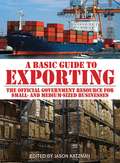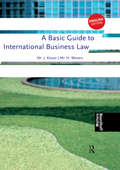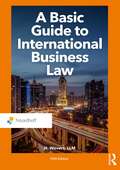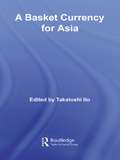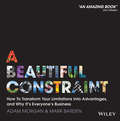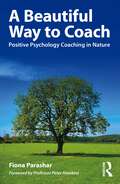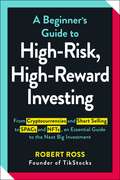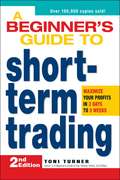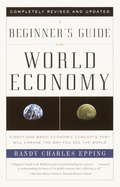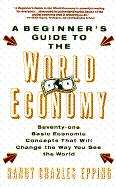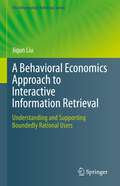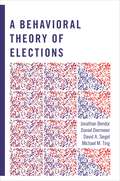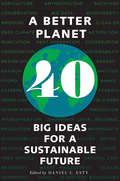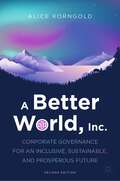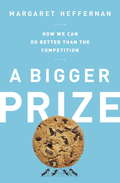- Table View
- List View
A Basic Guide to Exporting: The Official Government Resource For Small - And Medium-sized Businesses
by Jason KatzmanHere is practical advice for anyone who wants to build their business by selling overseas. The International Trade Administration covers key topics such as marketing, legal issues, customs, and more. With real-life examples and a full index, A Basic Guide to Exporting provides expert advice and practical solutions to meet all of your exporting needs.
A Basic Guide to International Business Law
by Keizer Jan Weavers HarmA Basic Guide to International Business Law is an introduction to those parts of European and international law that are relevant to business. Having read this book, students will come away with a broad understanding of the international rules of law within the EEC, institutional rules of the European Union, international contract law, rules of competition and the four freedoms within the EEC. The edition includes student friendly features, such as summaries of statements and references to relevant case law, making the book an ideal introduction for those on law and/or business programmes.
A Basic Guide to International Business Law (Routledge-Noordhoff International Editions)
by Harm WeversA Basic Guide to International Business Law aims to give students an understanding as well as practical knowledge of legal problems arising in the area of international business, and to equip them with the skills needed to prevent and tackle these problems. All Chapters employ the same didactic structure. Introductory case studies, examples, annotated case law, glossaries, diagrams, summaries and exercises are all designed to familiarize students quickly with relevant aspects of international (business) law. A Basic Guide to International Business Law deals with the following topics: • Introduction to International Private Law and European Law • Legal aspects of negotiations • International contracts: matters of jurisdiction and the law applicable to these contracts • International contracts of sale • Competion law • Free movement of goods, workers, the freedom of capital and establishment and the freedom to provide services • International payments • Carriage of goods by road and sea • Incoterms • Entry modes (agents, representatives, distributors, licensing, franchising)
A Basket Currency for Asia (Routledge Studies in the Growth Economies of Asia #Vol. 65)
by Takatoshi ItoThe failure of the dollar peg to prevent the Asian currency crisis of 1997 to 1998 has highlighted the importance of the exchange rate regime in Asia and provoked much discussion as to what the alternatives are in terms of exchange rate systems. Bringing together extensive research on Asian basket currencies in one volume, this new text discusses whether a currency basket system is the answer, striking a balance between the theoretical and empirical. With strong policy implications for East Asia, the impressive team of contributors argue that for countries that have close economic relationships with several currency areas, it is well worth considering a currency basket system. The book also pursues the important idea of coordination failure, whereby if each individual country tries to adopt an optimal exchange rate given other neighbouring countries' policies, they may collectively fail to reach a region's optimal exchange rate regime. A Basket Currency for Asia is a topical and significant text that will appeal to students and scholars of international finance and Asian economics.
A Beautiful Constraint: How To Transform Your Limitations Into Advantages, and Why It's Everyone's Business
by Adam Morgan Mark BardenAn inspiring yet practical guide for transforming limitations into opportunitiesA Beautiful Constraint: How to Transform Your Limitations Into Advantages And Why It's Everyone's Business Now is a book about everyday, practical inventiveness, designed for the constrained times in which we live. It describes how to take the kinds of issues that all of us face today--lack of time, money, resources, attention, know-how--and see in them the opportunity for transformation of oneself and one's organization's fortunes. The ideas in the book are based on the authors' extensive work as business consultants, and are brought to life in 35 personal interviews from such varied sources as Nike, IKEA, Unilever, the U.S. Navy, Formula One racecar engineers, public school teachers in California, and barley farmers in South Africa. Underpinned by scientific research into the psychology of breakthrough, the book is a practical handbook full of tools and tips for how to make more from less. Beautifully designed and accessible, A Beautiful Constraint will appeal beyond its core business audience to anyone who needs to find the opportunity in constraint.The book takes the reader on a journey through the mindset, method and motivation required to move from the initial "victim" stage into the transformation stage. It challenges us to:Examine how we've become path dependent--stuck with routines that blind us from seeing opportunity along new pathsAsk Propelling Questions to help us break free of those paths and put the most pressing and valuable constraints at the heart of our processAdopt a Can If mentality to answer these questions--focused on "how," not "if"Access the abundance to be found all around us to help transform constraintsActivate the high-octane mix of emotions necessary to fuel the tenacity required for successWe live in a world of seemingly ever-increasing constraints, driven as much by an overabundance of choices and connections as by a scarcity of time and resources. How we respond to these constraints is one of the most important issues of our time and will be a large determinant of our progress as people, businesses and planet, in the future. A Beautiful Constraint calls for a more widespread capability for constraint-driven problem solving and provides the framework to achieve that.
A Beautiful Way to Coach: Positive Psychology Coaching in Nature
by Fiona ParasharLeaders need to renew and recharge regularly to lead more effectively. Forget the squeezed hour of coaching on Zoom or in a busy office – this book invites coaches and leaders alike to re-energise their style of executive coaching by stepping beyond traditional techniques and out of the office for an executive day retreat. Based on the award-winning framework of the Positive Vision Day programme, this accessible book introduces a new approach to coaching, combining time-out in a natural and beautiful setting with positive psychology. The book is designed to inspire coaches and leaders to take a day away from the desk, step into nature and renew their energy and purpose. As a coach, you are needed more than ever to help leaders align their strengths and values to their personal vision. This book does just that, and provides: Detailed exercises linking psychological underpinnings to the goals of each exercise, including how to avoid classic coaching pitfalls. Journaling prompts for self-reflection and self-coaching. Easy-to-understand models, templates, scripts and action steps for every stage of the process. The approach used in the book will be of particular interest to not only leadership and executive coaches, and internal executive coaches, but also career, entrepreneurship, business, wellbeing and life coaches, as well as leaders themselves who are mid-career or at a career or psychological crossroads.
A Beginner's Guide to 3D Modeling: A Guide to Autodesk Fusion 360
by Cameron CowardA Beginner&’s Guide to 3D Modeling is a project-based, straightforward introduction to computer-aided design (CAD). You&’ll learn how to use Autodesk Fusion 360, the world&’s most powerful free CAD software, to model gadgets, 3D print your designs, and create realistic images just like an engineering professional—with no experience required! Hands-on modeling projects and step-by-step instructions throughout the book introduce fundamental 3D modeling concepts. As you work through the projects, you&’ll master the basics of parametric modeling and learn how to create your own models, from simple shapes to multipart assemblies. Once you&’ve mastered the basics, you&’ll learn more advanced modeling concepts like sweeps, lofts, surfaces, and rendering, before pulling it all together to create a robotic arm. You&’ll learn how to:• Design a moving robotic arm, a door hinge, a teapot, and a 20-sided die• Create professional technical drawings for manufacturing and patent applications • Model springs and other complex curves to create realistic designs • Use basic Fusion 360 tools like Extrude, Revolve, and Hole• Master advanced tools like Coil and ThreadWhether you&’re a maker, hobbyist, or artist, A Beginner&’s Guide to 3D Modeling is certain to show you how to turn your ideas into professional models. Go ahead—dust off that 3D printer and feed it your amazing designs.
A Beginner's Guide to High-Risk, High-Reward Investing: From Cryptocurrencies and Short Selling to SPACs and NFTs, an Essential Guide to the Next Big Investment
by Robert RossMake the best choices for your money and earn big with this guide to high-risk, high-reward investment strategies including options trading, investing in meme stocks, and the business of cryptocurrency.Your favorite sites are filled with the latest investment trends and stories of other people making bank by making smart moves in the market. But how can you get your own share of the wealth? A Beginner&’s Guide to High-Risk, High-Reward Investing can help you make sense of trends, from short selling to cryptocurrency and &“meme stock,&” breaking down the buzzwords to give you hard facts about the opportunities and risks of fringe investment strategies. With advice from expert Robert Ross, this easy-to-follow investing guide gives you everything you need to determine which high-risk, high-reward investment strategies are the best fit for your portfolio.
A Beginner's Guide to Paradise: A True Story for Dreamers, Drifters, and Other Fugitives from the Ordinary
by Alex SheshunoffSo You Too Can: - Move to a South Pacific Island - Wear a Loincloth - Read a Hundred Books - Diaper a Baby Monkey - Build a Bungalow And Maybe, Just Maybe, Fall in Love! * * Individual results may vary.The true story of how a quarter-life crisis led to adventure, freedom, and love on a tiny island in the Pacific. From the author of a lot of emails and several Facebook posts comes A Beginner’s Guide to Paradise, a laugh-out-loud, true story that will answer your most pressing escape-from-it-all questions, including: 1. How much, per pound, should you expect to pay a priest to fly you to the outer islands of Yap? 2. Classic slumber party stumper: If you could have just one movie on a remote Pacific island, what would it definitely not be? 3. How do you blend fruity drinks without a blender? 4. Is a free, one-hour class from Home Depot on “Flowerbox Construction” sufficient training to build a house? From Robinson Crusoe to Survivor, Gilligan’s Island to The Beach, people have fantasized about living on a remote tropical island. But when facing a quarter-life crisis, plucky desk slave Alex Sheshunoff actually did it. While out in Paradise, he learned a lot. About how to make big choices and big changes. About the less-than-idyllic parts of paradise. About tying a loincloth without exposing the tender bits. Now, Alex shares his incredible story and pretty-hard-won wisdom in a book that will surprise you, make you laugh, take you to such unforgettable islands as Yap and Pig, and perhaps inspire your own move to an island with only two letters in its name. Answers: 1) $1.14 2) Gas Attack Training Made Simple 3) Crimp a fork in half and insert middle into power drill 4) No.From the Hardcover edition.
A Beginner's Guide to Short-Term Trading: Maximize Your Profits in 3 Days to 3 Weeks
by Toni TurnerTrade you way to financial success!Are you tired of playing the "buy-and-hope" game with your stocks? Savvy stock trader Toni Turner shows you the ins and outs and ups and downs of short-term trading. You'll learn how to buy and sell stocks on a monthly, weekly, or even daily basis, so you can own the right stocks at the right time. Turner's clear, common-sense advice, easy-to-follow explanations, and helpful examples will help you invest in the exciting and profitable world of short-term trading quickly and safely. In this revised edition, you'll get completely up-to-date information on: -New products such as ETFs and expanded coverage on sector investing -Resources for choosing an online broker New SEC (Securities and Exchange Commission) rules and regulations -Updated charts and graphs with current examples A Beginner's Guide to Short-Term Trading is the hands-on book designed to get you actively involved in every step of the trading process. Now you can take control of your portfolio and secure the financial freedom you've always dreamed of. Start planning your trades today!
A Beginner's Guide to Structural Equation Modeling
by Tiffany A. Whittaker Randall E. SchumackerA Beginner’s Guide to Structural Equation Modeling, fifth edition, has been redesigned with consideration of a true beginner in structural equation modeling (SEM) in mind. The book covers introductory through intermediate topics in SEM in more detail than in any previous edition. All of the chapters that introduce models in SEM have been expanded to include easy-to-follow, step-by-step guidelines that readers can use when conducting their own SEM analyses. These chapters also include examples of tables to include in results sections that readers may use as templates when writing up the findings from their SEM analyses. The models that are illustrated in the text will allow SEM beginners to conduct, interpret, and write up analyses for observed variable path models to full structural models, up to testing higher order models as well as multiple group modeling techniques. Updated information about methodological research in relevant areas will help students and researchers be more informed readers of SEM research. The checklist of SEM considerations when conducting and reporting SEM analyses is a collective set of requirements that will help improve the rigor of SEM analyses. This book is intended for true beginners in SEM and is designed for introductory graduate courses in SEM taught in psychology, education, business, and the social and healthcare sciences. This book also appeals to researchers and faculty in various disciplines. Prerequisites include correlation and regression methods.
A Beginner's Guide to Structural Equation Modeling: Fourth Edition
by Richard G. Lomax Randall E. SchumackerNoted for its crystal clear explanations, this book is considered the most comprehensive introductory text to structural equation modeling (SEM). Noted for its thorough review of basic concepts and a wide variety of models, this book better prepares readers to apply SEM to a variety of research questions. Programming details and the use of algebra are kept to a minimum to help readers easily grasp the concepts so they can conduct their own analysis and critique related research. Featuring a greater emphasis on statistical power and model validation than other texts, each chapter features key concepts, examples from various disciplines, tables and figures, a summary, and exercises. Highlights of the extensively revised 4th edition include: -Uses different SEM software (not just Lisrel) including Amos, EQS, LISREL, Mplus, and R to demonstrate applications. -Detailed introduction to the statistical methods related to SEM including correlation, regression, and factor analysis to maximize understanding (Chs. 1 - 6). -The 5 step approach to modeling data (specification, identification, estimation, testing, and modification) is now covered in more detail and prior to the modeling chapters to provide a more coherent view of how to create models and interpret results (ch. 7). -More discussion of hypothesis testing, power, sampling, effect sizes, and model fit, critical topics for beginning modelers (ch. 7). - Each model chapter now focuses on one technique to enhance understanding by providing more description, assumptions, and interpretation of results, and an exercise related to analysis and output (Chs. 8 -15). -The use of SPSS AMOS diagrams to describe the theoretical models. -The key features of each of the software packages (Ch. 1). -Guidelines for reporting SEM research (Ch. 16). -www.routledge.com/9781138811935 which provides access to data sets that can be used with any program, links to other SEM examples, related readings, and journal articles, and more. Reorganized, the new edition begins with a more detailed introduction to SEM including the various software packages available, followed by chapters on data entry and editing, and correlation which is critical to understanding how missing data, non-normality, measurement, and restriction of range in scores affects SEM analysis. Multiple regression, path, and factor models are then reviewed and exploratory and confirmatory factor analysis is introduced. These chapters demonstrate how observed variables share variance in defining a latent variables and introduce how measurement error can be removed from observed variables. Chapter 7 details the 5 SEM modeling steps including model specification, identification, estimation, testing, and modification along with a discussion of hypothesis testing and the related issues of power, and sample and effect sizes.Chapters 8 to 15 provide comprehensive introductions to different SEM models including Multiple Group, Second-Order CFA, Dynamic Factor, Multiple-Indicator Multiple-Cause, Mixed Variable and Mixture, Multi-Level, Latent Growth, and SEM Interaction Models. Each of the 5 SEM modeling steps is explained for each model along with an application. Chapter exercises provide practice with and enhance understanding of the analysis of each model. The book concludes with a review of SEM guidelines for reporting research. Designed for introductory graduate courses in structural equation modeling, factor analysis, advanced, multivariate, or applied statistics, quantitative techniques, or statistics II taught in psychology, education, business, and the social and healthcare sciences, this practical book also appeals to researchers in these disciplines. Prerequisites include an introduction to intermediate statistics that covers correlation and regression principles.
A Beginner's Guide to the World Economy
by Randy Charles EppingThe third edition updates the information in previous editions and explains many new concepts. What is the new economy? What is globalization? Is the euro the final seal on European Union? How is e-commerce transforming our world beyond economics? What is virtual money, and does it have real value? How do social concerns and societal ills (drugs, poverty, AIDS, endangered natural resources) play a part in the rapidly changing world economy. What are multinationals, and do they signal the end of nationalism? These and many other pertinent issues are concisely addressed in the most accessible primer for those who want to be economically literate (and who doesn't?).
A Beginner's Guide to the World Economy: 71 Basic Economic Concepts that will Change the Way You See the World
by Randy Charles EppingFrom arbitrage to the IMF, from exchange rates to money laundering, a clear exposition of how the global economy works. Includes a glossary of terms.
A Behavioral Economics Approach to Interactive Information Retrieval: Understanding and Supporting Boundedly Rational Users (The Information Retrieval Series #48)
by Jiqun LiuThis book brings together the insights from three different areas, Information Seeking and Retrieval, Cognitive Psychology, and Behavioral Economics, and shows how this new interdisciplinary approach can advance our knowledge about users interacting with diverse search systems, especially their seemingly irrational decisions and anomalies that could not be predicted by most normative models.The first part “Foundation” of this book introduces the general notions and fundamentals of this new approach, as well as the main concepts, terminology and theories. The second part “Beyond Rational Agents” describes the systematic biases and cognitive limits confirmed by behavioral experiments of varying types and explains in detail how they contradict the assumptions and predictions of formal models in information retrieval (IR). The third part “Toward A Behavioral Economics Approach” first synthesizes the findings from existing preliminary research on bounded rationality and behavioral economics modeling in information seeking, retrieval, and recommender system communities. Then, it discusses the implications, open questions and methodological challenges of applying the behavioral economics framework to different sub-areas of IR research and practices, such as modeling users and search sessions, developing unbiased learning to rank and adaptive recommendations algorithms, implementing bias-aware intelligent task support, as well as extending the conceptualization and evaluation on IR fairness, accountability, transparency and ethics (FATE) with the knowledge regarding both human biases and algorithmic biases.This book introduces a behavioral economics framework to IR scientists seeking a new perspective on both fundamental and new emerging problems of IR as well as the development and evaluation of bias-aware intelligent information systems. It is especially intended for researchers working on IR and human-information interaction who want to learn about the potential offered by behavioral economics in their own research areas.
A Behavioral Theory of Elections
by Jonathan Bendor Michael M. Ting Daniel Diermeier David A. SiegelMost theories of elections assume that voters and political actors are fully rational. While these formulations produce many insights, they also generate anomalies--most famously, about turnout. The rise of behavioral economics has posed new challenges to the premise of rationality. This groundbreaking book provides a behavioral theory of elections based on the notion that all actors--politicians as well as voters--are only boundedly rational. The theory posits learning via trial and error: actions that surpass an actor's aspiration level are more likely to be used in the future, while those that fall short are less likely to be tried later. Based on this idea of adaptation, the authors construct formal models of party competition, turnout, and voters' choices of candidates. These models predict substantial turnout levels, voters sorting into parties, and winning parties adopting centrist platforms. In multiparty elections, voters are able to coordinate vote choices on majority-preferred candidates, while all candidates garner significant vote shares. Overall, the behavioral theory and its models produce macroimplications consistent with the data on elections, and they use plausible microassumptions about the cognitive capacities of politicians and voters. A computational model accompanies the book and can be used as a tool for further research.
A Better Choice: Healthcare Solutions for America
by John C. GoodmanThe Patient Protection and Affordable Care Act—a.k.a. Obamacare—remains highly controversial and faces ongoing legal and political challenges. Polls show that by a large margin Americans remain opposed to the healthcare law and seek to &“repeal and replace&” it. However, the question is: Replace it with what?In A Better Choice, John C. Goodman clearly and concisely provides the compelling answer—no small feat, considering the complexity and intransigence of problems that have long plagued American healthcare. His prescription of four key reforms may garner the greatest attention as policymakers and the public search for a way out of the healthcare quagmire. For anyone who wants to learn about some of the boldest prescriptions designed to remedy our healthcare system, Goodman&’s book is a must-read.
A Better Life: Slowing Down to Get Ahead
by Rebecca SmithThe founder of Better Life Bags, Rebecca Smith, teaches us how to take little steps, say yes when God calls, and follow the passion He has given us.Let love stretch you. As the founder of one of the most popular custom handbag companies in the country, Rebecca Smith knows a thing or two about business. A highly successful entrepreneur in a world where the focus is on scalability, brand strategy, and global marketing, Rebecca Smith also knows the truth: that every success she's experienced at Better Life Bags has been the result of very small, very ordinary, very obedient steps of faith.Moving from Savannah, Georgia, to Hamtramck, Michigan, was culture shock enough for Rebecca. But trying to feel at home in a city where twenty-six different languages were spoken and most of the inhabitants were immigrants seemed downright impossible. It was only when Rebecca recognized that God had called her to this specific neighborhood at this particular moment in time that his plans began to unfold for her. Stepping forward into the place God had called her - a place that seemed messy and uncomfortable and unfamiliar - Rebecca discovered the true secret to success: when we slow down, pay attention, and trust that still, small voice of God to guide us, we just might change the world.Though Rebecca never set out to build a brand or create an empire, God saw Rebecca's heart for others, and began to multiply her efforts in ways she could have never imagined, creating a company where women from different cultures, faiths, and backgrounds work together for the good of others - for a better life.As you read this inspiring story, you will discover how to hear and follow God's voice for yourself as you slow down, take one small step at a time, and make a difference in the world right where you are.
A Better Planet: Forty Big Ideas for a Sustainable Future
by Daniel C. Esty Ingrid C. BurkeA practical, bipartisan call to action from the world’s leading thinkers on the environment and sustainability Sustainability has emerged as a global priority over the past several years. The 2015 Paris Agreement on climate change and the adoption of the seventeen Sustainable Development Goals through the United Nations have highlighted the need to address critical challenges such as the buildup of greenhouse gases in the atmosphere, water shortages, and air pollution. But in the United States, partisan divides, regional disputes, and deep disagreements over core principles have made it nearly impossible to chart a course toward a sustainable future. This timely new book, edited by celebrated scholar Daniel C. Esty, offers fresh thinking and forward-looking solutions from environmental thought leaders across the political spectrum. The book’s forty essays cover such subjects as ecology, environmental justice, Big Data, public health, and climate change, all with an emphasis on sustainability. The book focuses on moving toward sustainability through actionable, bipartisan approaches based on rigorous analytical research.
A Better Way to Budget: Building Support for Bold, Student-Centered Change in Public Schools
by Nathan LevensonA Better Way to Budget provides practical, innovative advice on how to overcome the political and social pushback that often prevents district and school leaders from shifting scarce resources to the most student-centered uses. Nathan Levenson shows how school leaders can uncover the sources of potential conflicts and create a budgeting process that normalizes change, minimizes pushback, and builds public buy-in for needed reforms.A Better Way to Budget:focuses on a strategic and process-oriented approach that anticipates roadblocks and challenges;introduces eight effective strategies for shifting funds and winning support;provides real-life examples of mistakes and successes; andincludes joint fact-finding, simulations, and other exercises to help stakeholders agree on goals and identify the budgetary changes needed to reach those objectives.Filled with advice gathered over decades of work in schools, A Better Way to Budget provides timely insights and tools for leaders who are exploring ways to make their districts more inclusive and student-centered.
A Better World, Inc.: Corporate Governance for an Inclusive, Sustainable, and Prosperous Future
by Alice KorngoldThe first edition of A Better World, Inc. showed how companies can profit by solving global problems. Increasingly, companies and investors are capitalizing on these opportunities. The three factors necessary for success were revealed to be effective corporate governance, stakeholder engagement, and collaboration. Racial equity and justice, and gender equity, were also themes in the original edition. By drawing on new research and case studies, this updated edition shows that inclusion and sustainability are in fact fundamental prerequisites for prosperity for companies and society. Specifically, racial inequity and injustice, and gender inequity, are systemic problems that impede businesses from achieving their greater potential in the global marketplace; in the meantime, society suffers as well. The second edition of A Better World, Inc. builds on the first by showing that companies have the power and incentives – and their boards of directors have the responsibility and the authority – to drive solutions to social, economic, and environmental challenges. Readers will learn how companies and their boards, together with nonprofits and governments, can drive prosperity by centering equity and sustainability.This edition is organized to address environmental, social, and governance practices, which are priority interests for investors, media, the public, government, and others to assess company practices and profitability.
A Beveridge Reader (The Works of William H. Beveridge)
by John Williams Karel WilliamsThe editors have chosen substantial extracts to illustrate the major themes and ideas in Beveridge’s writing over a period of more than four decades, ranging from his book Unemployment, published in 1909, to the Beveridge Report of 1942 and beyond. Sections cover his social philosophy; the crucial role he attributed to social insurance as a technique of welfare; his relation to economics; and the stress he placed on voluntary action in a free society. Each theme is introduced by a full editorial commentary which explains its place in Beveridge’s thought, as well as outlining his position and offering critical guidance to the reader. The return of mass unemployment and continuing debate on the role of the welfare state has revived interest in Beveridge’s work and this reader brings his ideas.
A Bibliography of Female Economic Thought up to 1940 (Routledge Studies in the History of Economics)
by Kirsten Madden Michele Pujol Janet SeizContributions to female economic thought have come from prolific scholars, leading social reformers, economic journalists and government officials along with many other women who contributed only one or two works to the field. It is perhaps for this reason that a comprehensive bibliographic collection has failed to appear, until now. This innovative book brings together the most comprehensive collection to date of references to women’s economic writing from the 1770s to 1940. It includes thousands of contributions from more than 1,700 women from the UK, the US and many other countries. This bibliography is an important reference work for systematic inquiry into questions of gender and the history of economic thought. This volume is a valuable resource and will interest researchers on women's contributions to economic thought, the sociology of economics, and the lives of female social scientists and activist-authors. With a comprehensive editorial introduction, it fills a long-standing gap and will be greeted warmly by scholars of the history of economic thought and those involved in feminist economics.
A Bibliography of the Literature on North American Climates of the Past 13,000 Years
by Donald K GraysonOriginally published in 1975, this extensive bibliography has been drawn from archaeological, botanical, geological, meteorological and zoological sources. It covers those studies which deal with periods of time for which modern observational data are not available. Included sources range from those which make minor contributions to our understanding of North American paleoclimates to those whose impacts upon this understanding have been considerable.
A Bigger Prize
by Margaret HeffernanA visionary business writer shows how to acheive success in all areas of life--by not competing for it. Tiger mothers stand by with tutors to make sure schoolchildren keep pace. At college, deepening debt is the only way to stay ahead. In the world of work, bond traders and derivatives sellers push ever-riskier products onto unsuspecting customers, themselves eager to pay for a lifestyle that demonstrates how well they're doing. How did we get sucked into a worldview that has proved so destructive, anti-social and wasteful? Whatever made us believe that competition would reward the smartest people, the greatest products, the best companies? Why do we trust that competitive games, markets and tests will magically identify the just winner? Surrounded by over-complex technology and cheap and tawdry merchandise, how could we imagine that competition is anything other than a forcef or devastation and waste? In her brilliant new book, Margaret Heffernan reveals how blind pursuit of success in business and life limits our opportunities and keeps us from positive choices. She argues that instead of allowing ourselves to be slaves to competition, we should tap into natural reserves of altruism, collaboration and cooperation. Those talents are innate and genetically hardwired, ripe for development, primed for innovation. Drawing on the latest scientific and economic research and her own numerous interviews with everyone from captains of industry to neuroscientists to Olympic athletes, Margaret Heffernan debunks competition as the ultimate answer to our biggest questions. But in doing so she reveals its positive aspects that until now have gone largely unacknowledged. This superbly readable book shows us how to do competition differently--and better--in business and in life.
